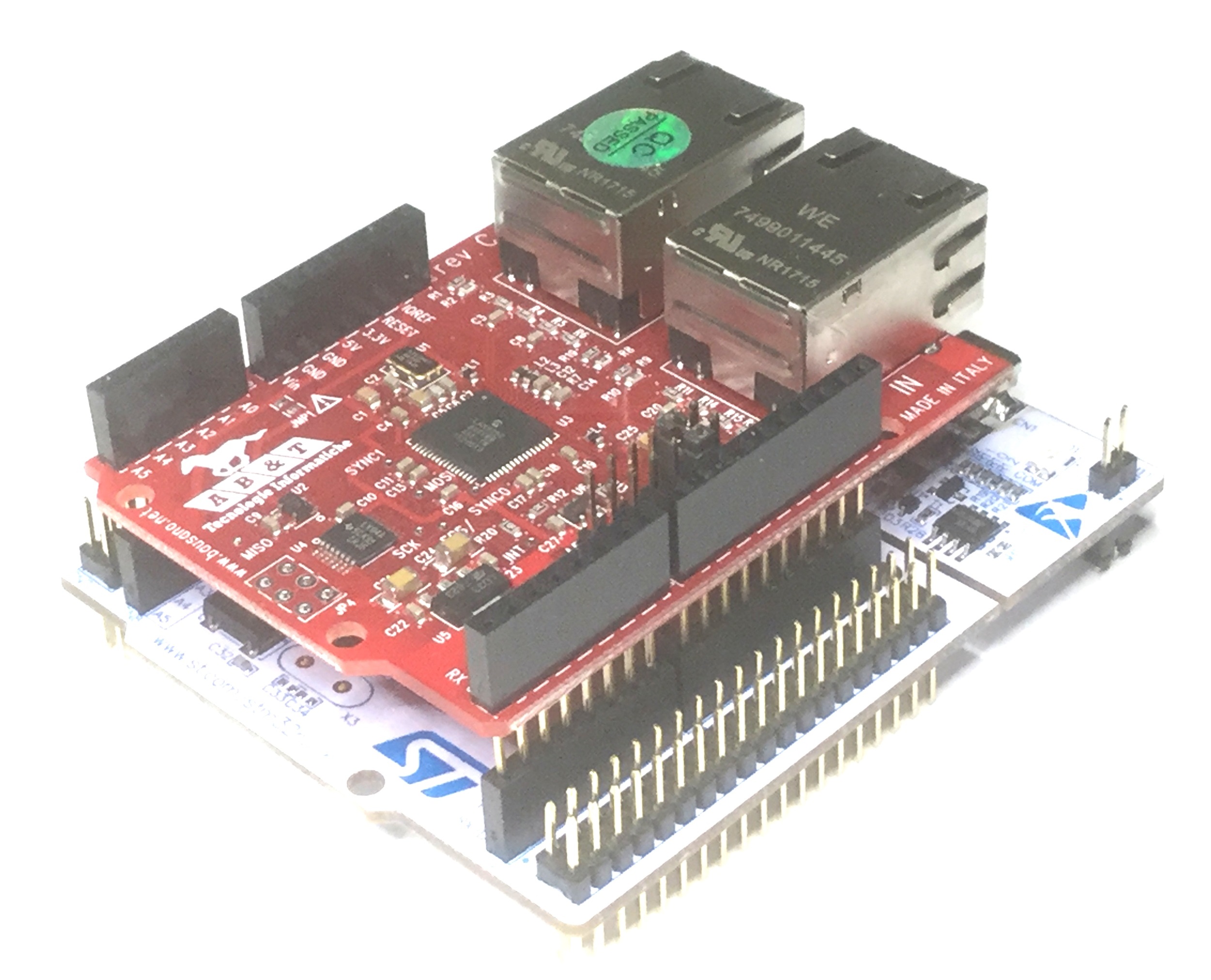EasyCAT test with SM synchronization - EtherCAT slave example
Dependencies: mbed EasyCAT_lib
The EasyCAT Shield and  boards
boards

- The EasyCAT Shield is an Arduino shield, designed and manufactured in Italy by AB&T Tecnologie Informatiche, that allow us to build a custom EtherCAT® slave in an easy way.
- This is the EasyCAT product page on the EtherCAT® Technology Group website.
- The TestEasyCAT_SM_sync program is a basic example that shows how to excange some I/O between the EtherCAT master and the EasyCAT slave, using the Synchronization Manager synchronization.
Import programTestEasyCAT_SM_sync
EasyCAT test with SM synchronization - EtherCAT slave example
Import libraryEasyCAT_lib
EasyCAT shield library - It allows you to make an EtherCAT slave
Revision 1:a1411df7f601, committed 2019-01-09
- Comitter:
- EasyCAT
- Date:
- Wed Jan 09 09:40:53 2019 +0000
- Parent:
- 0:ec011e648d2e
- Commit message:
- revision 2 - moved "DigitalOut Led(LED1)"
Changed in this revision
| main.cpp | Show annotated file Show diff for this revision Revisions of this file |
diff -r ec011e648d2e -r a1411df7f601 main.cpp
--- a/main.cpp Tue Sep 12 17:26:41 2017 +0000
+++ b/main.cpp Wed Jan 09 09:40:53 2019 +0000
@@ -12,6 +12,9 @@
//********************************************************************************************
+// revision 2 - moved "DigitalOut Led(LED1)"
+
+
//- EasyCAT shield application basic example 170912
//- using SM syncronization for mbed boards
//
@@ -78,7 +81,7 @@
DigitalIn In_2(D6); //
DigitalIn In_3(D7); //
-DigitalOut Led(LED1); //
+
DigitalIn InterruptPin(D2); // This pin receive the SM interrupt
@@ -138,6 +141,8 @@
// The most common reason is that the SPI
// chip select choosen on the board doesn't
// match the one choosen by the firmware
+
+ DigitalOut Led(LED1); //
while (1) // stay in loop for ever
{ // with the led blinking


